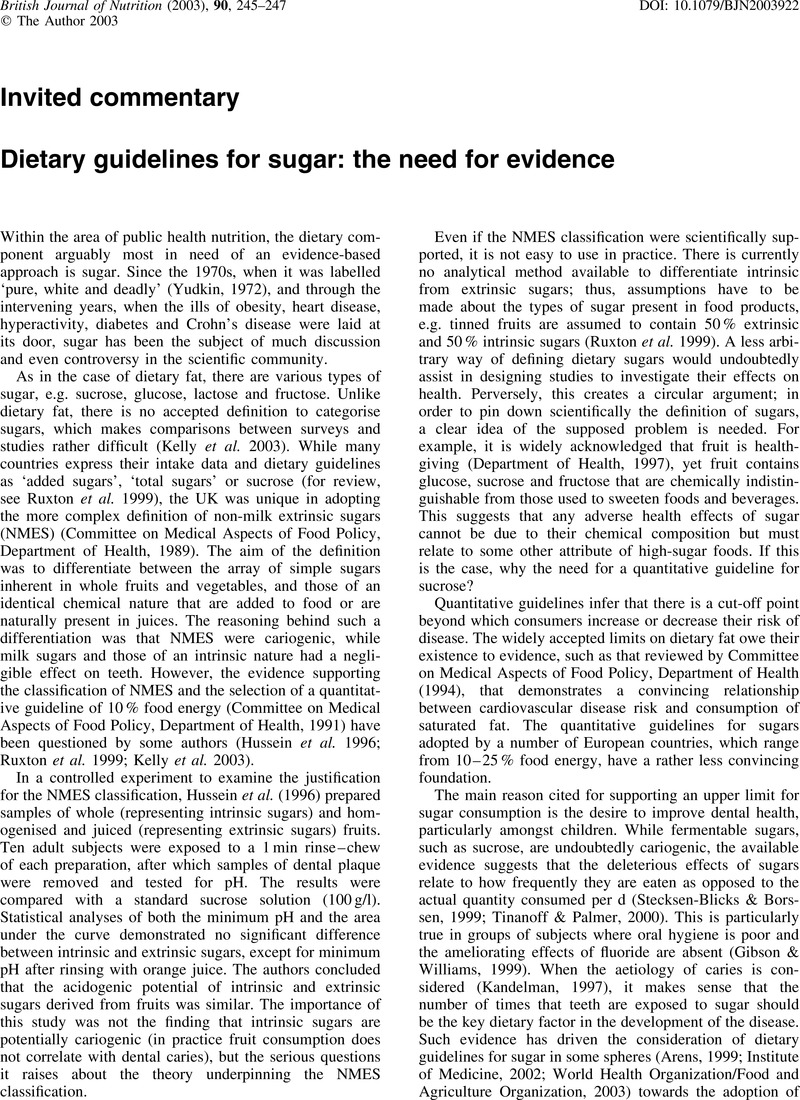Crossref Citations
This article has been cited by the following publications. This list is generated based on data provided by Crossref.
Gibson, Sigrid A.
2007.
Dietary sugars intake and micronutrient adequacy: a systematic review of the evidence.
Nutrition Research Reviews,
Vol. 20,
Issue. 2,
p.
121.
van Dam, R M
and
Seidell, J C
2007.
Carbohydrate intake and obesity.
European Journal of Clinical Nutrition,
Vol. 61,
Issue. S1,
p.
S75.
Gibson, Sigrid
and
Boyd, Alison
2008.
Associations between added sugars and micronutrient intakes and status: further analysis of data from the National Diet and Nutrition Survey of Young People aged 4 to 18 years.
British Journal of Nutrition,
Vol. 101,
Issue. 1,
p.
100.
Livingstone, M. B. E.
and
Rennie, K. L.
2009.
Added sugars and micronutrient dilution.
Obesity Reviews,
Vol. 10,
Issue. s1,
p.
34.
Hendriksen, Marieke A.
Tijhuis, Mariken J.
Fransen, Heidi P.
Verhagen, Hans
and
Hoekstra, Jeljer
2011.
Impact of substituting added sugar in carbonated soft drinks by intense sweeteners in young adults in the Netherlands: example of a benefit–risk approach.
European Journal of Nutrition,
Vol. 50,
Issue. 1,
p.
41.
Maunder, Eleni M. W.
Nel, Johanna H.
Steyn, Nelia P.
Kruger, H. Salome
Labadarios, Demetre
and
Kirchmair, Rudolf
2015.
Added Sugar, Macro- and Micronutrient Intakes and Anthropometry of Children in a Developing World Context.
PLOS ONE,
Vol. 10,
Issue. 11,
p.
e0142059.
Shafaeizadeh, Shila
Muhardi, Leilani
Henry, Christiani
Van de Heijning, Bert
and
Van der Beek, Eline
2018.
Macronutrient Composition and Food Form Affect Glucose and Insulin Responses in Humans.
Nutrients,
Vol. 10,
Issue. 2,
p.
188.


